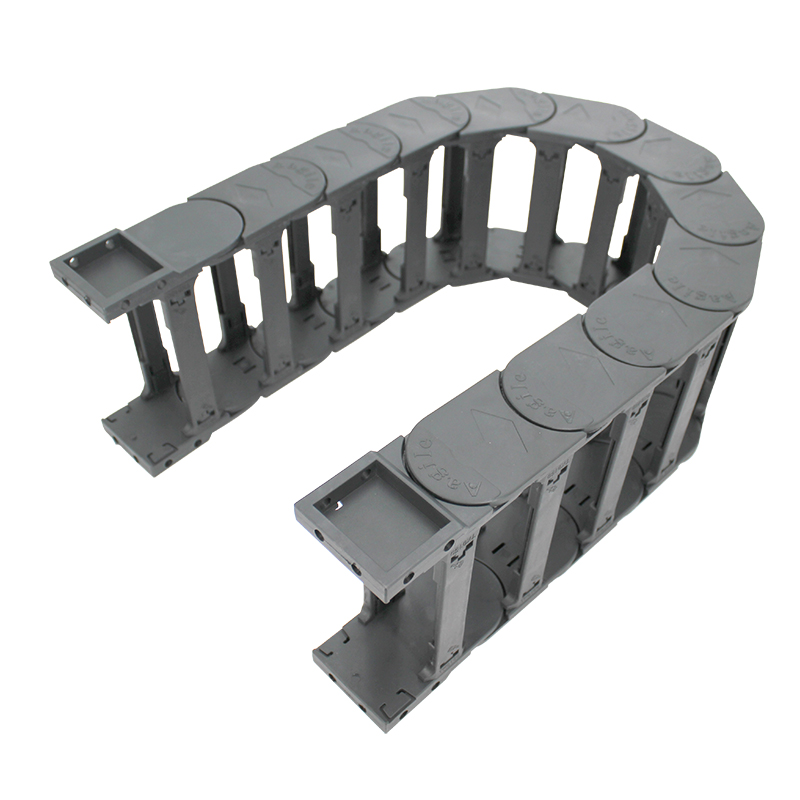drag chain size chart
Understanding Drag Chain Size Charts A Comprehensive Guide
In the world of automation and machinery, ensuring that cables and hoses are properly organized and protected is crucial for maintaining efficiency and safety. This is where drag chains, also known as cable carriers or energy chains, come into play. They serve the essential purpose of securely guiding and protecting moving cables and hoses in applications such as robotics, CNC machinery, and automated systems. Choosing the right drag chain size is vital, and this decision can be greatly aided by understanding drag chain size charts.
What is a Drag Chain?
A drag chain is a hollow, segmented channel that houses various cables and hoses. It allows for smooth and unrestricted movement while minimizing wear and tear. They are typically made from durable materials such as plastic or metal, which are capable of withstanding the demands of industrial environments. The design helps to prevent entanglement and damage to the cables while allowing for a greater range of motion.
Importance of Drag Chain Size
Selecting the correct drag chain size is crucial for several reasons
1. Protection A properly sized drag chain protects cables and hoses from abrasion and damage caused by movement. An undersized chain could lead to kinking and wear, while an oversized chain could cause excess vibration and slop, leading to premature failure.
2. Efficiency The right size ensures that cables and hoses are maintained in an optimal manner, allowing for smooth operation and minimizing the risk of entanglement.
3. Safety In industrial settings, safety is paramount. A well-chosen drag chain can prevent accidents caused by loose cables or hoses, ensuring a safer working environment for employees.
4. Cost-Effectiveness Choosing the correct size can minimize maintenance and replacement costs over time. Properly sized drag chains reduce wear on cables and hoses, leading to lower overall operating expenses.
Reading a Drag Chain Size Chart
drag chain size chart

A drag chain size chart provides crucial information for selecting the appropriate chain for your application. Here’s how to effectively use a drag chain size chart
1. Identify Application Needs Determine the specific requirements of your application, such as the type of cables and hoses, the weight they carry, and the environment in which they will operate.
2. Cable and Hose Diameter Determine the maximum diameter of the cables and hoses that will be included in the drag chain. Most charts list the internal width and height that correspond to different chain sizes.
3. Bend Radius The bend radius is an essential factor—it refers to the minimum radius that the drag chain can bend without causing stress damage to the cables and hoses inside. Make sure to check that the drag chain can accommodate your desired bend radius.
4. Chain Length and Travel Distance Consider the total length of cable that needs to be covered and the travel distance of the drag chain. This will help determine not just the size but also the length of the drag chain needed.
5. Weight Capacity Verify the weight limits of the drag chain to ensure it can support the combined weight of the cables and hoses, especially for larger installations.
6. Environmental Conditions Evaluate the environmental factors such as temperature extremes, exposure to chemicals, or potential for abrasion. This can inform your choice of material and type of drag chain.
Conclusion
In conclusion, understanding drag chain size charts is essential for anyone involved in industrial automation or machinery. These charts provide the necessary guidelines to select the appropriate drag chain, ensuring that cables and hoses are safely and effectively managed. By carefully considering application needs, cable sizes, bend radii, and environmental conditions, individuals can prevent equipment failures and enhance overall operational efficiency.
Choosing the right drag chain leads to improved safety, reduced maintenance costs, and a more streamlined operation, ultimately contributing to a more productive workplace. As technology continues to advance, the design and utility of drag chains will only improve, making them an integral component of modern industrial applications.








